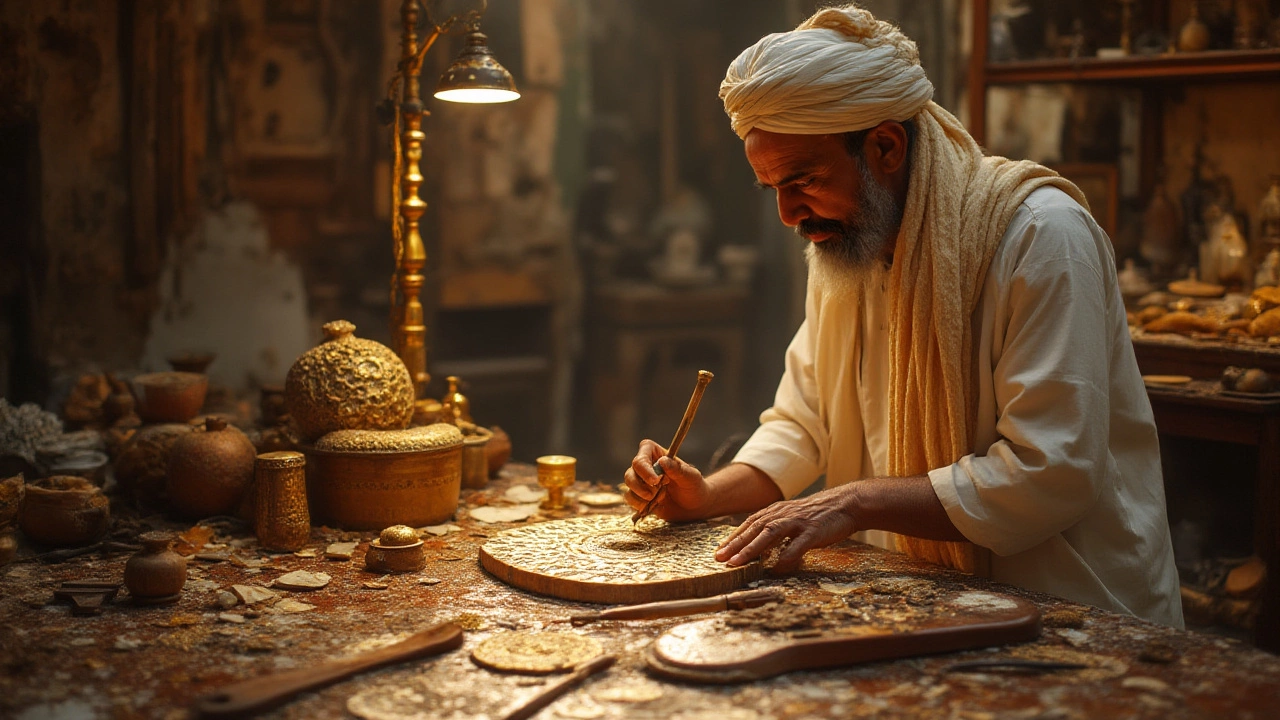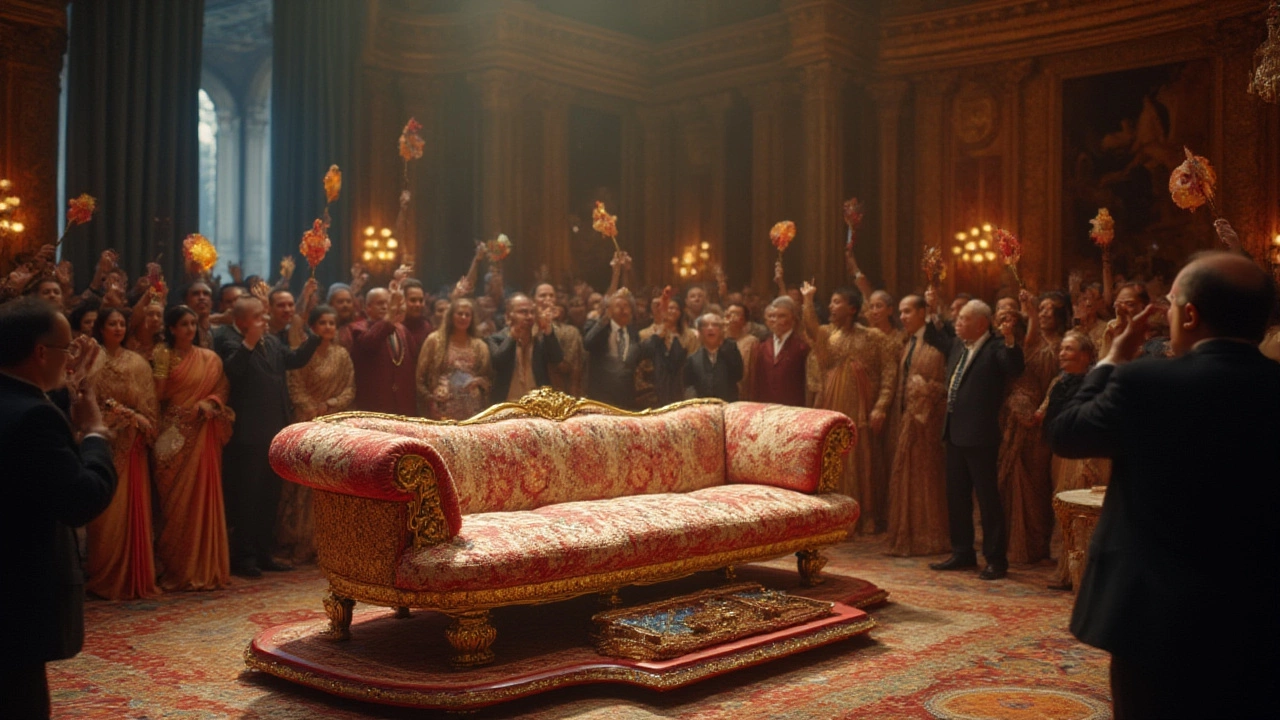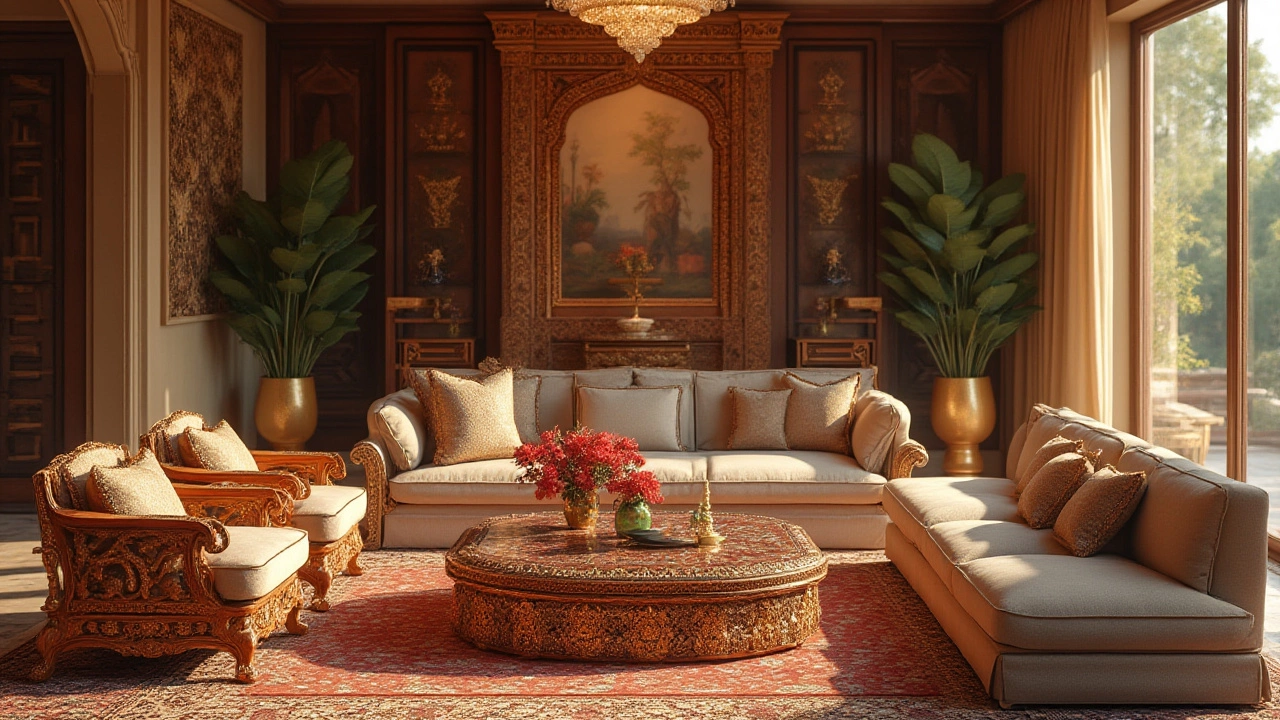Fancy a chair that costs more than a mansion? It may sound wild, but the costliest furniture pieces ever made have price tags that leave Lamborghinis in the dust. Forget designer handbags—immense fortunes get poured into desks, beds, and cabinets so stunning that people treat them like treasure, not plain household stuff. We're talking about the world where furniture isn’t just for sitting—it’s an art, an obsession, a smart investment, and sometimes, a flex for billionaires who want more than gold-plated faucets. Some of these creations combine ancient history, cutting-edge technique, rare materials, and famous makers, pushing their price into the realm of fantasy. Why do people pay so much? And what even makes one piece of furniture worth millions, while another is just a couch? Let’s get into the details.
The Most Expensive Furniture Pieces Ever Sold
You probably know about the iconic Mona Lisa, but did you know a single 18th-century desk once fetched more than $36 million at auction? That was the Badminton Cabinet, created in Florence in the 1700s and decked out in precious stones, inlay, and ebony. It’s not alone. The Dragon’s Chair, designed by Eileen Gray, grabbed headlines in 2009 by selling for almost $28 million. What made that chair so pricey? For starters, few exist. Only about a handful were ever made, and the world’s biggest collectors, like fashion kingpin Yves Saint Laurent, owned them.
Beds aren’t immune to luxury status either. One that grabs a ton of attention: the Royal State Bed by Georges Jacob, dating back to late eighteenth-century France. This bed isn’t just for royalty in name—kings and queens actually used it, and it sold for several million dollars. If you’re picturing the basic sleigh bed from a big box store, think again: the frame is hand-carved, loaded with gold leaf, and stands higher than most adults.
And don’t forget the Harrington Commode, which looks like the sort of chest your grandma wishes she kept in the attic. It’s the work of Thomas Chippendale, the most legendary name in English furniture-making. In 2010, it sold for $5.9 million—with every inch hand-crafted for an English nobleman in the 1700s. The secret here? Brand matters. Chippendale, Gray, Jacob—these names are the Picassos of furniture. When prestige and flawless execution meet, prices explode. Want to sit at the world’s most expensive dining table? The Tufft Table, made by Philadelphia furniture hero Thomas Tufft in the 18th century, sold for $4.6 million. Its openwork legs and hand-carved details made collectors swoon.
Take a look at how furniture prices have shot through the roof in recent decades:
| Furniture Piece | Year Sold | Sale Price (USD) |
|---|---|---|
| Badminton Cabinet | 2004 | $36.7 million |
| Eileen Gray "Dragons" Chair | 2009 | $28.0 million |
| Royal State Bed | 2010 | $6.4 million |
| Harrington Commode (Chippendale) | 2010 | $5.9 million |
| Tufft Table | 1990 | $4.6 million |
To sum up? These aren’t just collectibles—they’re showcases of power, style, and sometimes pure nostalgia. A table that sat in the palace of a legendary family will always have a story (and a price) that mass-produced pieces can’t touch.
Why Certain Furniture Commands Mind-Blowing Prices
Huge price tags aren’t just about gold leaf and crystal—there are lots of reasons a piece of furniture becomes staggeringly valuable. First up: rarity. If only one exists, or just a few survived history’s bumps and bruises, collectors will drive up the price. Imagine a chair that survived revolutions, wars, and floods, looking almost like it did 250 years ago. That’s the dream.
Sometimes, the big names truly matter. Furniture designed by Chippendale or Gray isn’t just for comfort—it’s collectible, iconic, and instantly recognizable. Even today, designers and brands like Boca do Lobo or Marc Newson create limited editions to ensure their best pieces stay rare and valuable.
Another big deal is the quality of craftsmanship. Handmade joints, marquetry (those inlaid woods), or specialty lacquers take time, talent, and focus—skills only a few artisans can master. These pieces aren’t churned out on a conveyor. One example: The Badminton Cabinet took 6 years to make, with a crew of 30 artisans, and the result was so magnificent it astonished even royalty.
Historical significance is huge. Furniture linked to a famous person or event—say, Napoleon’s desk, or a king’s wardrobe—instantly becomes more valuable. Sometimes collectors chase after vibes, too. The art deco lines of the Dragons Chair, for instance, have a seductive look that just feels different from anything at the local store. The idea is, you’re not just buying a chair; you’re buying into an era, a story, a legacy.
And let’s talk materials. Some furniture uses the rarest stuff on the planet: woods like ebony and rosewood, plus gold, precious stones, ivory, and bronze. The more elusive and high-quality the ingredients, the higher the cost. One recent twist? Furniture inlaid with meteorite or mammoth tusk for that extra touch of exclusivity (and controversy).
There’s also the investment angle. Sounds crazy, but expensive furniture almost always holds or grows in value. If you check auction house reports, prices for museum-worthy pieces double or triple every decade. $5 million spent on a Chippendale chest? For those in the know, that’s safer than the stock market. Some buyers even hide their investments in climate-controlled vaults, waiting for prices to climb.
So, why do people pay wild sums for a table or chair? Simple: they crave uniqueness, quality, history, prestige, and a seat at the high-rolling table of collectors hunting the world’s costliest furniture.

Master Craftsmen and Famous Brands That Make History
Let’s be honest—if you say the word "IKEA" at an antique auction, people might laugh. But start tossing out names like Chippendale, Gray, or Ruhlmann, and collectors perk up. These master craftsmen didn’t just make furniture—they pioneered new styles, techniques, and standards of luxury.
Thomas Chippendale (1718–1779) is at the top of the chain. In his London workshop, he redefined furniture with bold forms, dramatic carvings, and perfect finish. Chippendale’s published designs inspired furniture makers worldwide, and his original works still fetch millions—when they come up for sale at all. His pieces are considered the gold standard by those in the know: oak, mahogany, walnut, never plywood.
Jump ahead to the sleek lines of the early 20th century and you’ll bump into Eileen Gray. Her Dragons Chair is art deco royalty, mixing Asian curves and leather detail. Then there’s Jean-Michel Frank, whose rare minimalist works captured Hollywood royalty in the 1930's—and fetch six-figure sums at auctions today. In France, the cabinetmakers of the Louis XV and Louis XVI courts (like Jean-Henri Riesener) made everything for royalty, with intricate marquetry, gilding, even secret compartments. Owning their work is a passport into a different world.
High-end brands in the modern era have their own cult following. Names like Fendi Casa, Boca do Lobo, and Edra produce limited edition sofas and tables, sometimes collaborating with celebrity designers or artists. These pieces show up in penthouses and superyachts, spotlighted in design magazines—and often snapped up before the paint dries. Tip: If you ever see “one-of-a-kind” or “numbered edition,” you’re looking at something the price of a condo, not a couch from the mall.
Collectors and decorators keep a secret list of rising star craftsmen. Fancy investing? Look for pieces from these up-and-comers before they hit global fame. If you’re hoping to buy, pay attention to provenance—the story behind an item can boost its value as much as the builder. If your spouse is ever confused why you want to drop $50,000 on a table, just say, “Rajen says it’s about history and genius.” Mira gives me that look sometimes, too.
The Hidden Details: Materials, Techniques, and Mystique
What separates a million-dollar chair from an overpriced beanbag? A whole lot, it turns out. First, there’s the material—a ton of these high-ticket furniture pieces use rare, almost legendary ingredients. Think ebony so dense it sinks in water, marbles quarried just for royalty, gold used as trim, and gem-studded handles. Some modern designers even use blue lapis or inlay meteorite for an out-of-this-world effect.
But it isn’t just about flashy stuff. The techniques matter just as much. Old-school woodworking stars like Chippendale or Riesener used hand-carving so precise it takes a magnifying glass to spot the cuts. You might see marquetry—little pieces of wood, metal, or even tortoiseshell inlaid like a puzzle to make patterns or scenes. Some pieces have secret drawers or mechanisms—an 18th-century obsession with hidden compartments for everything from love letters to coins.
French royal furniture sometimes features ormolu (gilt-bronze ornament), and only a few workshops in the world still make the real deal entirely by hand. Close your eyes and imagine sitting at a writing desk that took six craftsmen three years to build—not the flimsy stuff that wobbles in a college dorm.
Modern luxury designers have their own tricks. Brands like Boca do Lobo blend cutting-edge CNC machining with hand-finishing, and experiment with alloys, resins, and even carbon fiber. Collectors love the fusion of heritage and science—old-world glamour meets tomorrow’s tech. If you want to see something incredible, look for the Piccadilly Sideboard by Boca do Lobo, which has a freeform, sculptural look and goes for hundreds of thousands. Edra’s Standard Sofa uses a hyper-flexible interior skeleton, making each seat mold perfectly to the body, blending comfort with jaw-dropping price tags.
Final tip: If you ever spot furniture with ‘signed’ pieces or visible craftsman’s marks underneath, that’s a good sign. It means it wasn’t mass-produced. Those hidden clues make the hunt for rare furniture addictive—and worth the money to collectors and investors alike.

Tips for Furniture Collectors and Investors
If you’re tempted to hunt for the world’s costliest furniture, start with curiosity—and a bit of skepticism. There are fakes, restorations, and overblown claims, so do your homework. Always demand provenance paperwork if you’re buying an antique. A real Chippendale chest or Riesener commode should have a clear record of who’s owned it. This isn’t just snobbery; it defends your investment and helps keep fake “discoveries” out of your living room.
Condition impacts price, so inspect everything—I mean everything. Check for woodworm, replaced parts, signs of refinishing, and hidden signatures. If possible, bring in an expert or use auction house services that will help you sniff out red flags. Want to buy from auctions? Stick to the giants: Christie’s, Sotheby’s, Phillips, or Bonhams. These places vet their consigned pieces harder than anywhere else; “private sales” can be riskier, though sometimes you’ll find rare bargains if you know the market.
Bargain-hunting? Look beyond Europe. Furniture history is rich in Asia and the Middle East; pieces like imperial Chinese chairs or Mughal inlay tables can sometimes be found before they hit global headlines. As tastes change, so do prices—don’t forget that modernism, art nouveau, and mid-century pieces by design icons (think Eames, Nakashima, or Ponti) are soaring in value.
And yes, insurance is a must. Furniture of this caliber needs the same treatment you’d give Picasso or diamonds. Climate-controlled rooms or special UV-filtered lighting protect those irreplaceable surfaces. You don’t want to own the world’s rarest cabinet, only for a spilled drink to ruin centuries of work.
Obsessed yet? Don’t feel weird—there are clubs, shows, and forums full of collectors swapping stories and sometimes pieces. Half the thrill is the chase: discovering a seemingly ordinary piece at an estate sale that turns out to be a forgotten masterpiece. And if your budget’s more “fancy dinner” than “private island,” don’t worry—a lot of design stores now offer high-quality reproductions. Just remember: the costliest furniture is about love as much as money—a blend of art, history, and a touch of magic you can’t find anywhere else.
